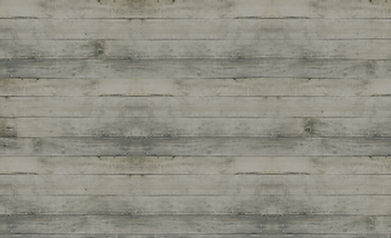
Children's
Myopia Control





Children Myopia Control
Research shows that children age between 7 and 16 are at the highest risk of developing myopia (short-sightedness). The younger the onset of myopia, the faster the potential increase, and also the higher the myopia. High degree of myopia has been linked to higher risks of sight threatening eye diseases, such as cataracts, glaucoma, macular degeneration, and retinal detachment.
At Central Eye Care, we recommend starting myopia control treatments to slow down the progression of myopia when children are at a young age to protect them from developing eye diseases as they age.
The myopia control treatment we offer are Orthokeratology (OrthoK), soft peripheral defocus contact lenses, and Myopilux spectacle lenses.
Orthokeratology
What is Orthokeratology (OrthoK) ?
OrthoK treatment involve fitting high oxyen gas permeable contact lenses to temporily correct or reduce myopic errors of the eye by reshaping the cornea (front surface of the eye). The lenses are worn overnight during sleep and are removed upon waking in the morning. During overnight wear, the cornea is reshaped to correct the focus of the eye so that eyeglasses or contact lenses are not required during the day time for clear vision.
More importantly, OrthoK treatment has been proven scientifically to be safe and effective in slowing the progression of myopia in children.
Who is a candidate?
-
Children with rapid increase of myopia will benefit from OrthoK in slowing the progression.
-
Adults who prefer a safe, reversible treatment for clear day time vision without eyeglasses or contact lenses, rather than having irreversible LASIK surgery.
OrthoK at Central Eye Care
-
Each OrthoK lens is made with the highest oxygen permeable material to ensure the health of your eyes.
-
Lenses are custom designed based on the natural shape of your eyes, obtained and mapped using our Corneal Topographer.
-
Our Optometrist has over 10 years experience fitting children and adult with OrthoK lenses. He has obtained the Certificate of Attainment in OrthoK Practice in 2006, and is also currently a Fellow member of the Hong Kong Academy of Orthokeratology (HKAOK).
-
Besides providing you good day time vision, ensuring the health of your eyes through optimal fitted lenses are our number one priority.
Soft peripheral defocus contact lenses
Misight 1 day is the world's first soft contact lens proven to significantly slow the progression of myopia in children, it features unique ActivControl™️ technology to reduce myopia progression for children who have a myopic prescription from -0.25D to -6.00D.
ActivControl™️ technology utilises dual zones for myopia management and correction:
-
Two correction zones (refractive correction to provide clear vision)
-
Two treatment zones (myopic defocus to slow down myopia progression)
After three years' wear, children wearing MiSight®️ 1 day had 59% less myopic progression on average compared to the control group1. They are soft, daily disposable lenses meaning they are comfortable on the eyes, easy to apply and hygienic because they are disposed on a daily basis.
Who can use Misight lenses?
Children and teenagers with myopia because once myopia is developed, the changes are permanent. It is also very likely that once the eyes become myopic, it continues to get worse.
NaturalVue for children myopia control
This advanced technology works naturally with the brain to automatically focus your eyes – for clear vision near, far and everywhere in between.
NaturalVue Multifocal Contact Lens wearers can perform 92% of daily activities without reading glasses, even in low light.
Myopia is corrected with glasses, contact lenses or surgery in some cases. Having myopia can increase your chances of having some eye problems later, like cataract, glaucoma and retinal detachment.
Studies show myopia is becoming more common among children. While there is no proven direct link, research suggests that children who spend more time indoors doing near-focused activities (such as computer work, video games, and reading) have higher rates of myopia than those who spend more time outdoors.
Doctors are looking at ways to slow the progression of myopia in children. While myopia cannot be reversed, the goal of treatment is to keep it from getting worse. This can protect a child’s eye health in the future, despite still needing to wear glasses or contact lenses.
Why NaturalVue Multifocal?
-
See clearly like spectacles without compromise
-
No need for readers – clear vision near, far and everywhere in between
-
Superior overall vision – 89% found better vision for everyday activities
-
Daily disposability for a fresh new pair every day
MyoVision™
MyoVision™ is a ZEISS single vision lens design with the innovative "Peripheral Vision Management" technology. It has been invented and designed in collaboration with Vision CRC and marketed exclusively by ZEISS.
MyoVision™ by ZEISS was developed following research that demonstrates the link between peripheral retinal image blur and myopia progression. MyoVision™ has been designed to provide sharp foveal vision while managing peripheral imaging through a unique and novel lens design.
A 12-month wearer efficacy trial amongst 210 Chinese school children resulted in a reduction in the progression of myopia by an average of 30% in a subgroup of 19 younger children (6 to 12 years old) with at least one myopic parent.*
This is statistically significant.
The benefits for the wearer:
-
Deliver clear and sharply focused vision
-
Initial research indicates an effect of sending a signal to the eye to reduce the progression of eye elongation
-
Offer good comfort through thin and light lenses
-
Provides excellent adaptability, cosmetic advantages and wearability
Unique Technology behind MyoVision™
Myopia is where the image of a distant object is focused in front of the retina, resulting in blurred distance vision. This is mostly a result of a lengthening (elongation) of the eyeball.
On the left is a comparative illustration for a normal and a myopic eye.


